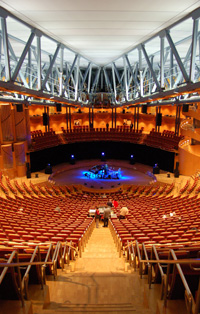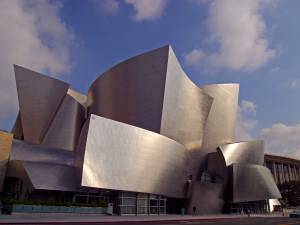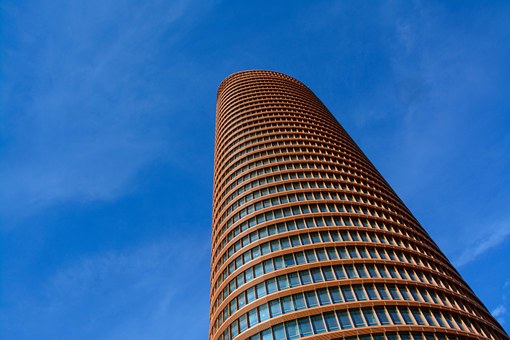Architectural acoustics contribute significantly to the enjoyment of music. This is due to the relationship between a song and its intended performance venue. With the proper balance of acoustical intimacy and aliveness, performance venues are designed to accentuate the characteristics of symphonic music and provide the best listening experience possible. After enduring centuries of trial and error, acousticians have developed several methods for building concert halls. These techniques are used today in an attempt to modernize the critically acclaimed “shoebox” design while maintaining its strengths. All this has been done in an effort to apply science to the art of acoustics.
Importance of Architectural Acoustics
Consider listening to the normally crisp sound of Beethoven’s Fifth Symphony in a cavern. While the unusual setting might draw an interested crowd, the very first garbled phrase makes it abundantly obvious why the disruptive echoes of a cave are unsuited for symphonic music.
Architectural acoustics have an enormous impact on the way listeners enjoy music. While the cave example is a bit extreme, you may have noticed through personal experience that some music simply sounds better in certain environments. What might be surprising is that this environmental bias is written into music. For example, centuries-old organ music sounds best in the reverberant stone walls of a cathedral. Since most organs were found in massive churches at that time, contemporaneous composers wrote music specifically tuned to the giant stone cathedral. Quite simply, the style of music was partially dictated by the performance venue [1]. This has always been the case, whether the music was written for a Baroque court or an outdoor amphitheater [2].
Since music is tied to a performance venue, the challenge for modern architectural acoustics is to develop concert halls that accentuate the characteristics of a given style of music (see Fig. 1). This is made all the more challenging because music appreciation is very subjective and difficult to characterize quantitatively. With a better understanding of the human ear and the movement of sound, experts endeavor to apply science to the art of acoustics.
Historical Investigations in Acoustics
Acoustics were first studied by the Greek philosopher Vitruvius. During this time, the primary performance venue was the outdoor amphitheater, predecessor to the Coliseum in Rome. The logic behind this design was that sound travels in concentric circles rising away from the performer. While there is some scientific truth to this conclusion, it was based on an underlying belief that architecture tapped into some deep cosmological harmony. Another conclusion concerning the nature of acoustics includes the hypothesis that designing a theater in the shape of a bell would allow it to resonate as such. Curiously, designers even proposed that concert halls, like wine, mature over time [3].
Eventually, when many scientific attempts to accurately understand and manipulate sound failed to revolutionize architectural acoustics, concert hall design began to focus on replicating successful precedents with only minor modifications. One of the designs that resulted from this trial and error process is known as the “shoebox” shaped concert hall. This design is characterized by a rectangular shape that is 50 to 80 feet wide, where the orchestra sits at one end and performs for a relatively small audience of floor seats. The shoebox appears in both the Vienna Grosser Musikvereinssaal (1890) and the Amsterdam Concertgebouw (1888), considered the two best concert halls in the world [2]. If these two auditoriums set the standard, one might wonder what it is about that design that makes it so ideal for orchestral and symphonic music. Acoustic experts have struggled for the last century to define these favorable characteristics and apply them to architecturally distinct venues that hold larger audiences.
How to Compare Concert Halls
When evaluating a concert hall, critics use two subjective characteristics: intimacy and aliveness. In acoustics, intimacy is based on how close the audience feels to the musician. Consequently, a performance in a small auditorium would be considered more intimate than a performance in a football stadium. While the importance of this characteristic varies with the style of performance, symphonic music is best appreciated in an intimate setting. This conveys the feeling that the music is being shared with rather than played at the listener.
Just as important is the aliveness of a given performance venue. This refers to the perceived extension of notes caused by reverberations, or echoes. There is an exact way that sound reflects off the stage, ceiling, and walls of a concert hall before reaching an audience member. The ear then blends these signals to create the illusion of a fuller tone. Symphonic music was composed to incorporate the effect of aliveness in the overall concert experience. If a venue is too alive, however, the reverberations begin to blur complex rhythms leaving only a smear of notes. A very dead venue, on the other hand, would kill all reverberations leaving only the sound coming directly from the performer. While this would make most classical music seem dry or empty, it is ideal for a modern recording studio because it cuts out all extra noise and facilitates a very clean performance for even the most complicated music. Even though intimacy and aliveness are both well established for describing the quality of a concert hall, neither of these characteristics can be measured. Since an immeasurable attribute is impossible to design for, acoustic architects have been forced to rely on indirect calculations and established precedents to create successful performance venues.
Using Science to Build Better Auditoriums
Acoustic design results from careful manipulation of two factors: initial time delay and reverberation time. Initial time delay is the elapsed time between hearing the direct sound and the first echo. The larger the delay, the more distant a listener feels from the source of the music. Even though intimacy is a subjective characteristic, initial time delay is used to predict the audience response the same way temperature is used to predict how hot or cold a person might feel. Ideally, a musician wants to reach his or her listeners as intimately as possible. Therefore, a good auditorium limits the initial time delay by manipulating the size and shape of the stage and the audience to quickly direct the reflections of the sound to the listener. Reverberation time measures the amount of time between the reception of the first echo and the moment when the subsequent echoes fade 60 decibels. Reverberation time represents the perceived length extension of a note due to the architecture. A list of ideal values for this quantity has been developed for a variety of performance styles, by measuring reverberation time in several critically acclaimed performance venues. Once a standard for comparison has been agreed upon, the next challenge for architects is developing methods for manipulating this feature.
According to W. C. Sabine, an acoustician from the 1920’s, reverberation time is related to the volume (size) of the room and the noise absorption of the surfaces. As the volume (size) of a performance chamber increases, the time it takes for sound to reflect off a surface and return to the listener also increases. Absorption affects the reverberation time by decreasing the intensity of reflected sounds so only the desired reflections are audible. For example, in a room where there is little absorption, a note that reflects off several surfaces can still be heard by the audience, resulting in an increased reverberation time. Vital to the manipulation of absorption is careful selection and distribution of materials such as felt, which is known to decrease the intensity of sound waves. Other acoustic characteristics, such as listener envelopment, are also included when testing a new design, but the greatest emphasis is placed on initial time delay and reverberation time because of their close association to acoustical intimacy and aliveness.
Modern Concert Halls
Not surprisingly, many modern concert halls have made use of these tuned acoustical characteristics, while bringing a personal touch to the venues. The Disney Music Hall in Los Angeles is well known for its architecturally distinct exterior accentuated by abstract shapes and metal surfaces (see Fig. 2). The interior, however, resembles the great European shoebox concert halls and as such maintains many of the acoustic qualities that made those venues so good. The Santa Fe Opera House, on the other hand, breaks new ground by trying to recreate the acoustics of a traditional opera theater in an outdoor venue. Without walls to reflect the sound to the audience, the acoustician for this project put great effort into the design of the roof over the stage. To succeed, this single surface has to establish similar intimacy and aliveness to complete the opera experience for listeners [4].
One major field of study in architectural acoustics is the development of performance venues that can be adjusted, or tuned, to a variety of performance styles. One such example is the Hollywood Bowl in Hollywood, California. Besides having all the complications of being an outdoor amphitheater, the Bowl incorporates a series of airfoils that can be moved to adjust the acoustical qualities of the stage. This allows the Hollywood Bowl to host not only the Los Angeles Philharmonic but also many contemporary musicians without major compromises in sound quality [5]. While every concert hall has its own characteristics that make it unique, these three examples illustrate the wide variety of performance venues that exist today.
Conclusion
By no means has the field of architectural acoustics finished defining the best sounding environments. Performance venues still drive the way musicians write music, but now this trend is taking an interesting turn with the development of digital audio and home stereo systems. Aware of the limitations inherent with these systems, contemporary artists are creating music that sounds best in the predicted listening environment. Whether music is played through an mp3 player or routed through car speakers, creating truly pleasing sound is one of the challenges facing music producers today [6]. For acousticians, developing better methods for designing new auditoriums to meet the ever-changing musical tastes of society will continue to take precedent as they endeavor to create the acoustically perfect theater that easily adjusts for every style of performance.





